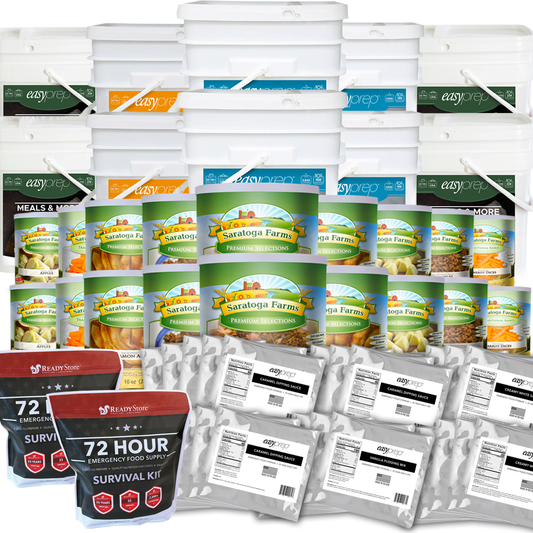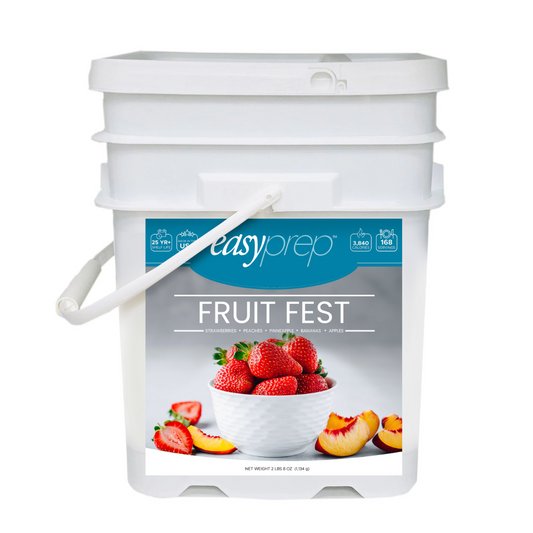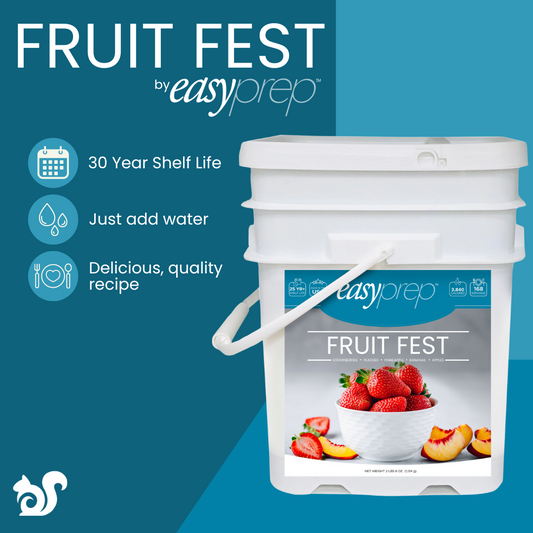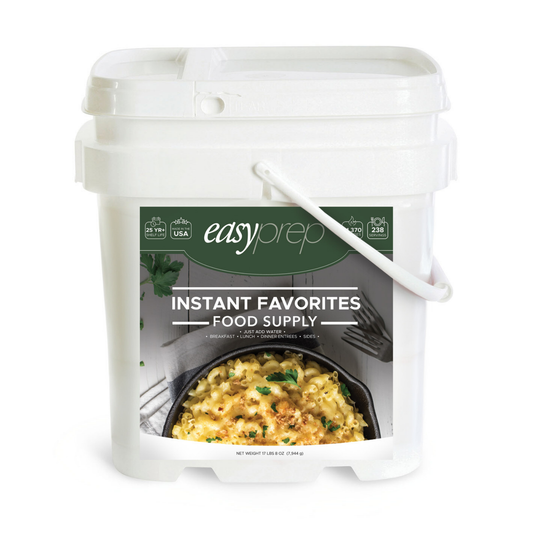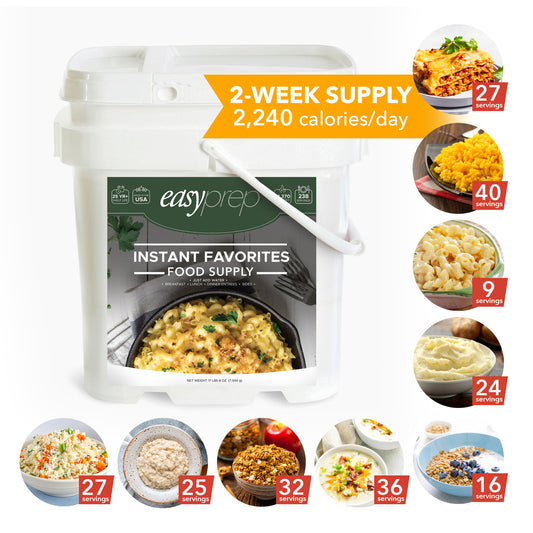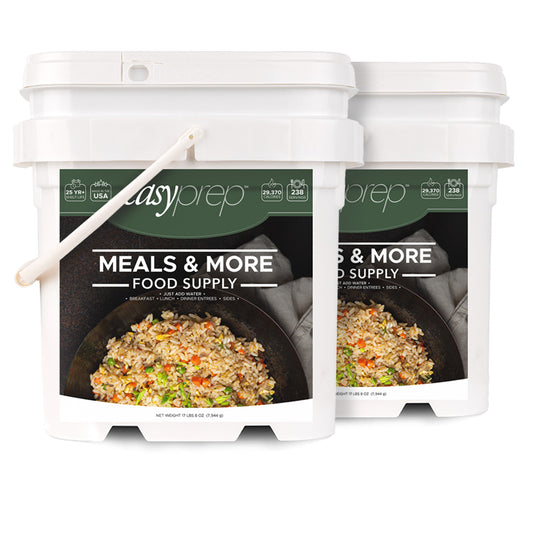How to Prepare in 5 Easy Steps(some of them you might already be doing!)
16 Jul 2020
Now lets be honest. no one really wants to prepare for an emergency and could be so for a number of reasons; don't know where to start, not sure what to get, etc, but doing so and preparing ahead of time can end up saving your life. Lets face it, having the motivation for starting is the biggest hurdle to get over and that is why we have outline some preparedness steps that you might already be doing. Check them out below!
1. Give Everyone Emergency Contact Information - Communication is key in every step of the way, especially here. Put a copy in your child's backpack(if applicable), the glove box of your car, your wallet or purse, and in your emergency kit. This way,  you'll always have the information handy even if you have to leave in a rush. It would also be important to include an out-of-town emergency contact. Local phone lines may be jammed during an emergency, so it will be easier to reach someone outside of the disaster area.
2. Make an Emergency Evacuation Plan; Identify where you can go in the event of an evacuation. Try to have more than one option: the home of a friend or family member in another town, a hotel or a shelter. Keep the phone numbers and addresses of these locations handy. It is important to have at least two meeting places established so all is aware of where to go when one does happen. Pre-arrange a designated place to meet in case your family members are separated before or during an emergency. Make the location specific, for example, "meet at the big clock in the middle of town square" not "meet at the town square". Ask an out-of-town friend or family member to act as a contact person for your family. If not all members in the family are present in the home when an emergency happens, somewhere like a grocery store or restaurant can be used. In addition, every family member should know the family’s emergency contact by heart. Map out your primary routes and backup routes to your evacuation destinations in case roads are blocked or impassable. Try to have a physical map of the area available in case GPS satellite transmissions are down or your devices run out of power. You’ll feel better knowing that you’ve done what you can to make your family safer.
3. Identify Your Problem Areas; Everyone should know what types of disasters can happen in a community. For example, preparing for a mudslide in California might not be as pertinent for someone in an area in Nebraska who is more likely to encounter a snow blizzard or a tornado. Another important step is to make sure a disaster plan is set in place so that all are aware of what to do when an emergency does strike.
4. Get Additional Education; Familiarize yourself with additional resources that are available to help you prepare for emergencies. FEMA's website and the American Red Cross are good places to start. Whether you already have a plan in place that could use some refreshing, or you're beginning from the ground up, you don't want to wait to make the necessary preparations for an emergency, wherever it may be. Not only is it the right thing to do on a personal level, but it makes good sense. Your family members will be safer, and any interruption to you caused by an emergency will be reduced as you efficiently execute your emergency plan – even though you hope you never have to.
5. Practice; A plan that isn't executed and practiced is useless. Hang your evacuation maps in visible, well-used areas. Be aware and modify your plan when necessary - practice makes perfect. When recommend practicing your emergency plan about every six months and modify if necessary. According to the U.S. Fire Administration (USFA), smoke detectors should be tested at least once a month and batteries should be replaced at least twice a year. Also, most carbon monoxide detectors are good for 5-7
you'll always have the information handy even if you have to leave in a rush. It would also be important to include an out-of-town emergency contact. Local phone lines may be jammed during an emergency, so it will be easier to reach someone outside of the disaster area.
2. Make an Emergency Evacuation Plan; Identify where you can go in the event of an evacuation. Try to have more than one option: the home of a friend or family member in another town, a hotel or a shelter. Keep the phone numbers and addresses of these locations handy. It is important to have at least two meeting places established so all is aware of where to go when one does happen. Pre-arrange a designated place to meet in case your family members are separated before or during an emergency. Make the location specific, for example, "meet at the big clock in the middle of town square" not "meet at the town square". Ask an out-of-town friend or family member to act as a contact person for your family. If not all members in the family are present in the home when an emergency happens, somewhere like a grocery store or restaurant can be used. In addition, every family member should know the family’s emergency contact by heart. Map out your primary routes and backup routes to your evacuation destinations in case roads are blocked or impassable. Try to have a physical map of the area available in case GPS satellite transmissions are down or your devices run out of power. You’ll feel better knowing that you’ve done what you can to make your family safer.
3. Identify Your Problem Areas; Everyone should know what types of disasters can happen in a community. For example, preparing for a mudslide in California might not be as pertinent for someone in an area in Nebraska who is more likely to encounter a snow blizzard or a tornado. Another important step is to make sure a disaster plan is set in place so that all are aware of what to do when an emergency does strike.
4. Get Additional Education; Familiarize yourself with additional resources that are available to help you prepare for emergencies. FEMA's website and the American Red Cross are good places to start. Whether you already have a plan in place that could use some refreshing, or you're beginning from the ground up, you don't want to wait to make the necessary preparations for an emergency, wherever it may be. Not only is it the right thing to do on a personal level, but it makes good sense. Your family members will be safer, and any interruption to you caused by an emergency will be reduced as you efficiently execute your emergency plan – even though you hope you never have to.
5. Practice; A plan that isn't executed and practiced is useless. Hang your evacuation maps in visible, well-used areas. Be aware and modify your plan when necessary - practice makes perfect. When recommend practicing your emergency plan about every six months and modify if necessary. According to the U.S. Fire Administration (USFA), smoke detectors should be tested at least once a month and batteries should be replaced at least twice a year. Also, most carbon monoxide detectors are good for 5-7 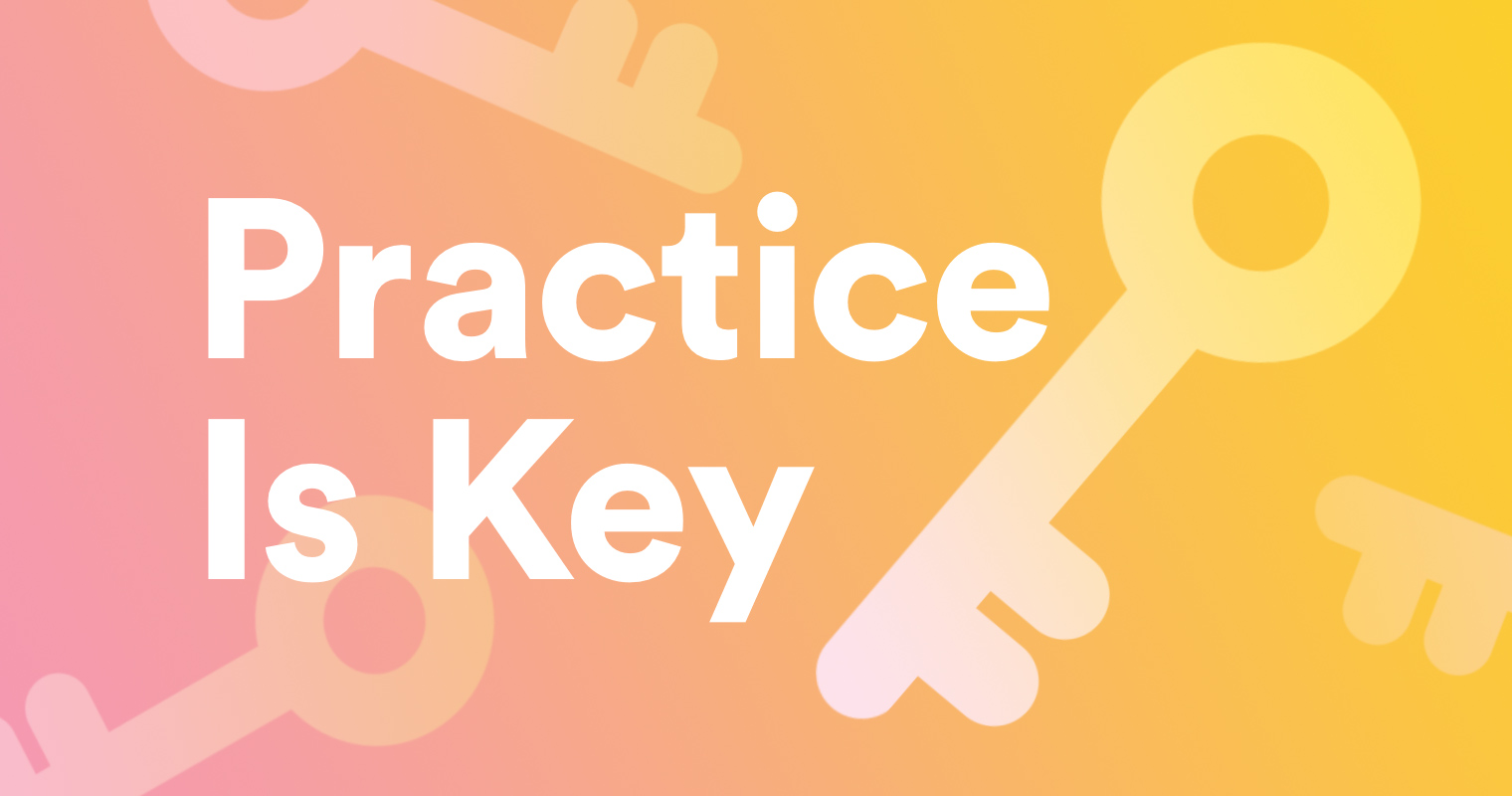 years and should be replaced after that time frame. Typically, the units have a tag or date stamp on the back to indicate its age or expiration date. All in all, we want you to be prepared if something were to happen. We hope this article makes you have a better understanding of what actions you need to take to make sure that you are prepared and ready if an emergency were to hit. Whether it be a car breakdown, a natural disaster or even unemployment; we can provide you with quality products that help you stay on your feet and become self-sufficient. We are here, always ready.
years and should be replaced after that time frame. Typically, the units have a tag or date stamp on the back to indicate its age or expiration date. All in all, we want you to be prepared if something were to happen. We hope this article makes you have a better understanding of what actions you need to take to make sure that you are prepared and ready if an emergency were to hit. Whether it be a car breakdown, a natural disaster or even unemployment; we can provide you with quality products that help you stay on your feet and become self-sufficient. We are here, always ready.
 you'll always have the information handy even if you have to leave in a rush. It would also be important to include an out-of-town emergency contact. Local phone lines may be jammed during an emergency, so it will be easier to reach someone outside of the disaster area.
2. Make an Emergency Evacuation Plan; Identify where you can go in the event of an evacuation. Try to have more than one option: the home of a friend or family member in another town, a hotel or a shelter. Keep the phone numbers and addresses of these locations handy. It is important to have at least two meeting places established so all is aware of where to go when one does happen. Pre-arrange a designated place to meet in case your family members are separated before or during an emergency. Make the location specific, for example, "meet at the big clock in the middle of town square" not "meet at the town square". Ask an out-of-town friend or family member to act as a contact person for your family. If not all members in the family are present in the home when an emergency happens, somewhere like a grocery store or restaurant can be used. In addition, every family member should know the family’s emergency contact by heart. Map out your primary routes and backup routes to your evacuation destinations in case roads are blocked or impassable. Try to have a physical map of the area available in case GPS satellite transmissions are down or your devices run out of power. You’ll feel better knowing that you’ve done what you can to make your family safer.
3. Identify Your Problem Areas; Everyone should know what types of disasters can happen in a community. For example, preparing for a mudslide in California might not be as pertinent for someone in an area in Nebraska who is more likely to encounter a snow blizzard or a tornado. Another important step is to make sure a disaster plan is set in place so that all are aware of what to do when an emergency does strike.
4. Get Additional Education; Familiarize yourself with additional resources that are available to help you prepare for emergencies. FEMA's website and the American Red Cross are good places to start. Whether you already have a plan in place that could use some refreshing, or you're beginning from the ground up, you don't want to wait to make the necessary preparations for an emergency, wherever it may be. Not only is it the right thing to do on a personal level, but it makes good sense. Your family members will be safer, and any interruption to you caused by an emergency will be reduced as you efficiently execute your emergency plan – even though you hope you never have to.
5. Practice; A plan that isn't executed and practiced is useless. Hang your evacuation maps in visible, well-used areas. Be aware and modify your plan when necessary - practice makes perfect. When recommend practicing your emergency plan about every six months and modify if necessary. According to the U.S. Fire Administration (USFA), smoke detectors should be tested at least once a month and batteries should be replaced at least twice a year. Also, most carbon monoxide detectors are good for 5-7
you'll always have the information handy even if you have to leave in a rush. It would also be important to include an out-of-town emergency contact. Local phone lines may be jammed during an emergency, so it will be easier to reach someone outside of the disaster area.
2. Make an Emergency Evacuation Plan; Identify where you can go in the event of an evacuation. Try to have more than one option: the home of a friend or family member in another town, a hotel or a shelter. Keep the phone numbers and addresses of these locations handy. It is important to have at least two meeting places established so all is aware of where to go when one does happen. Pre-arrange a designated place to meet in case your family members are separated before or during an emergency. Make the location specific, for example, "meet at the big clock in the middle of town square" not "meet at the town square". Ask an out-of-town friend or family member to act as a contact person for your family. If not all members in the family are present in the home when an emergency happens, somewhere like a grocery store or restaurant can be used. In addition, every family member should know the family’s emergency contact by heart. Map out your primary routes and backup routes to your evacuation destinations in case roads are blocked or impassable. Try to have a physical map of the area available in case GPS satellite transmissions are down or your devices run out of power. You’ll feel better knowing that you’ve done what you can to make your family safer.
3. Identify Your Problem Areas; Everyone should know what types of disasters can happen in a community. For example, preparing for a mudslide in California might not be as pertinent for someone in an area in Nebraska who is more likely to encounter a snow blizzard or a tornado. Another important step is to make sure a disaster plan is set in place so that all are aware of what to do when an emergency does strike.
4. Get Additional Education; Familiarize yourself with additional resources that are available to help you prepare for emergencies. FEMA's website and the American Red Cross are good places to start. Whether you already have a plan in place that could use some refreshing, or you're beginning from the ground up, you don't want to wait to make the necessary preparations for an emergency, wherever it may be. Not only is it the right thing to do on a personal level, but it makes good sense. Your family members will be safer, and any interruption to you caused by an emergency will be reduced as you efficiently execute your emergency plan – even though you hope you never have to.
5. Practice; A plan that isn't executed and practiced is useless. Hang your evacuation maps in visible, well-used areas. Be aware and modify your plan when necessary - practice makes perfect. When recommend practicing your emergency plan about every six months and modify if necessary. According to the U.S. Fire Administration (USFA), smoke detectors should be tested at least once a month and batteries should be replaced at least twice a year. Also, most carbon monoxide detectors are good for 5-7  years and should be replaced after that time frame. Typically, the units have a tag or date stamp on the back to indicate its age or expiration date. All in all, we want you to be prepared if something were to happen. We hope this article makes you have a better understanding of what actions you need to take to make sure that you are prepared and ready if an emergency were to hit. Whether it be a car breakdown, a natural disaster or even unemployment; we can provide you with quality products that help you stay on your feet and become self-sufficient. We are here, always ready.
years and should be replaced after that time frame. Typically, the units have a tag or date stamp on the back to indicate its age or expiration date. All in all, we want you to be prepared if something were to happen. We hope this article makes you have a better understanding of what actions you need to take to make sure that you are prepared and ready if an emergency were to hit. Whether it be a car breakdown, a natural disaster or even unemployment; we can provide you with quality products that help you stay on your feet and become self-sufficient. We are here, always ready.


